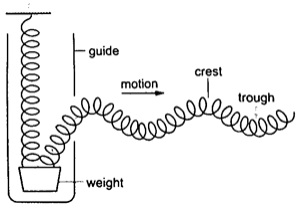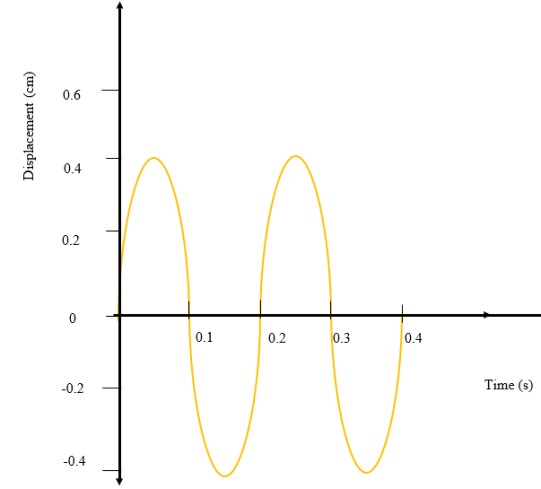- Other waves require a material medium to be transferred and are called mechanical waves i.e. water, sound waves etc.
Transverse and Longitudinal Pulses and Waves
1. Transverse waves
– They consist of a crest and a trough.- In this case the displacement of the medium caused by these pulses are perpendicular to the direction in which the wave (disturbance) travels.
- A pulse is a single non-repeated disturbance.
- If the pulses are repeated periodically (regularly) they produce a series of waves called periodic transverse wave train.
- They can be produced as shown below.

2. Longitudinal waves
- These are waves whereby the particles of the medium vibrate parallel to the direction of movement of the disturbance.- When several turns of a spring are pulled together (compression) and then released they tend to spread out to their original position.
- When pulled apart (rarefaction) they also turn to their original position.
- In this case the displacement of the spring is parallel to the motion of the wave and this is known as longitudinal.

Characteristics of waves
- All waves have speed which depends on the nature of disturbance.
- All waves have wavelength (distance between two successive points in a wave). Represented by the symbol λ and is measured in metres.
- All waves have frequency - ' f ' which is the number of waves passing a point in one
second. It is measured in cycles per second or hertz (Hz). The period of a wave is the
time required for a complete wave to pass a given point.
Therefore T = 1 / f or f = 1 / T (period is measured in seconds).
The speed 'v' is given as: v = λ / T, since f = 1 / T then v = (1 / T) x λ = f λ or v = f λ. This is the wave equation. - All waves have amplitude which is the maximum displacement of the particles of the medium as the wave passes.


